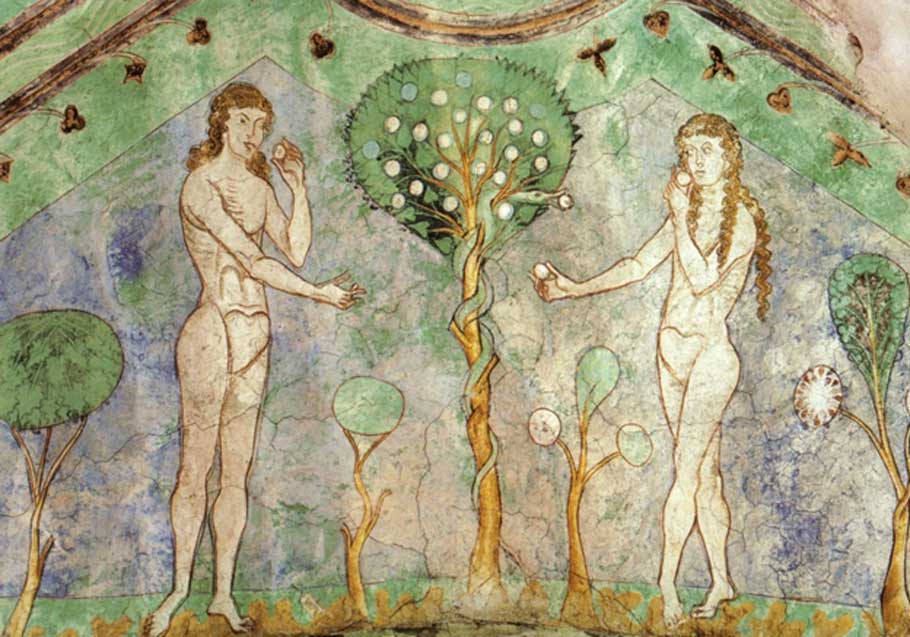
Divine, Forbidden and Dangerous? Magic Apples in Ancient Mythology
Apples have a prominent place in world mythology, and are often associated with paradise, magic, knowledge and sensual experience. Legendary magician Merlin was said to carry a silver bough from an apple tree which allowed him to cross into the other worlds and to return to the land of the living. It’s no accident, then, that the apple tree is closely associated with knowledge, truth, and enlightenment. The association between apples and knowledge continues in the Christian tradition as Eve offered Adam an apple—a fruit which grew on the tree of knowledge. Images after images were painted of this scene and the “forbidden fruit” became immortalized in arts as an apple.

Fresco of ‘First Sin’, Cathedral of Gurk, Austria. Circa 1264. (Public Domain)
This makes us forget that Eve actually offered Adam “a fruit”, and this fruit was not believed to be an apple until much later. Indeed, one of the problems identifying apples in mythology is that as late as the 17th century, the word "apple" was used as a generic term for all foreign fruits apart from berries. When tomatoes were introduced into Europe, they were called "love apples". in Old English, cucumbers are called eorppla, which literally translated as “earth apples”. Therefore, the word “apple” can actually refer to many other fruits in the ancient world. Yet, this particular fruit was chosen as the “forbidden fruit” and became the basis from which many other fruits were named. What is it about the apple that caused this fruit to become such a sacred symbol in the mythologies of the world?
The Golden Apples of Greek Mythology
The golden apples in the Garden of Hesperides were a wedding gift to Hera from Gaia and were protected by the great serpent, Ladon. The Apples were tended by the nymphs Hesperides, daughters of the titan Atlas.

The Garden of Hesperides, guarded by the serpent. (Public Domain)
The Garden itself was completely ruled by the Olympian gods and goddesses, therefore completely inaccessible to mortals. To complete his twelve labors, Hercules was sent to the garden to retrieve three of these golden apples for King Eurystheus.
To find the exact location of the Garden of Hesperides, Hercules had to pry the information from Nereus, the Old Man of the Sea, encounter and free Prometheus, kill Ladon, and implore Atlas to pick the apples for him. Eager to sit aside his burden of holding up the heavens, Atlas convinced Hercules to take up the heavens in his place before deciding to take the apples to Eurystheus himself and leave Hercules there. Hercules tricked him by claiming he needed to make a pad for his shoulders to hold the heavens up more comfortably, asking Atlas to take them up again for a moment. When Atlas held the heavens again, Hercules snatched the apples from him and left. After this long adventure to get the apples, Athena rather anticlimactically took the Apples from Eurystheus and returned them to the Garden.





